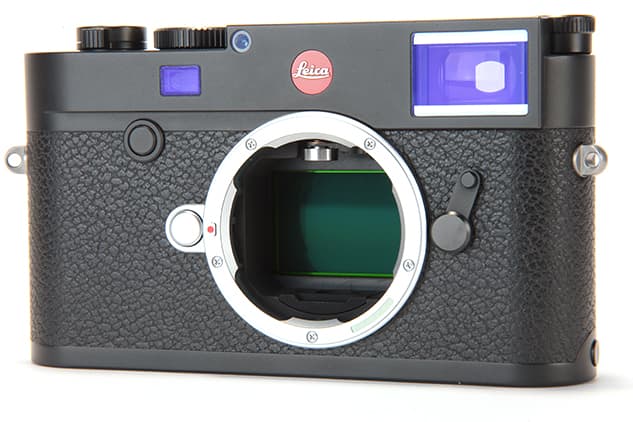Leica M10 review: Introduction
At a glance:
- 24-million-pixel full-frame CMOS sensor
- Leica Maestro-II image processor
- ISO 100-50,000
- 5fps continuous shooting
- +/-3EV exposure compensation
- Compatible with Leica Visoflex (Typ 020) electronic viewfinder
- Built-in Wi-fi connectivity
- £5,500 (body only)
One of the many pressures put on camera manufacturers today is the need to overload new models with all the latest technology to make them appeal to a mass-market audience. One camera that did just that was the Leica M (Typ 240). Successor to the iconic Leica M9, it aimed to update Leica’s traditional and much-loved recipe with modern-day features such as live view, clip-on electronic viewfinder, USB interface and full HD video. Some of these features were genuinely useful, but if you asked any purist of what they thought to the direction Leica was taking with their latest digital M-system rangefinders, they’d tell you adding video didn’t feel like the right way to go.

The M10 was paired with the Leica Summilux-M 35mm f/1.4 ASPH FLE for our product images
Rather than adopting the same approach as other brands, many Leica users felt they should focus on creating what they’re best known for – a legendary M-system stills camera and one that shares all the hallmarks of a traditional analog M-series cameras. It has taken a few years, but the manufacturer seems to have listened to its users and taken this feedback onboard. With their latest release, Leica has created a rangefinder that should not only satisfy brand-loyal users who desire the best build quality, but also purists who’s sole interest lies in stills photography.
Leica M10 review: Features
Stripped of movie recording and the Typ model identity that’s associated with Leica models in the past, the M10 is designed as close as possible to Leica’s analog M-system cameras in an attempt to create the best balance between heritage and technical innovation. At the heart of the camera lies a 24-million-pixel, full-frame, CMOS sensor, which excludes a low-pass filter and outputs 68.1MB files that measure 5976×3984 pixels. Specially optimised for Leica M-lenses and compatible with Leica R-mount lenses from the company’s film SLR days with an adapter, it’s a different sensor to the one used within the Leica Q (Typ 116) and Leica SL (Typ 601).
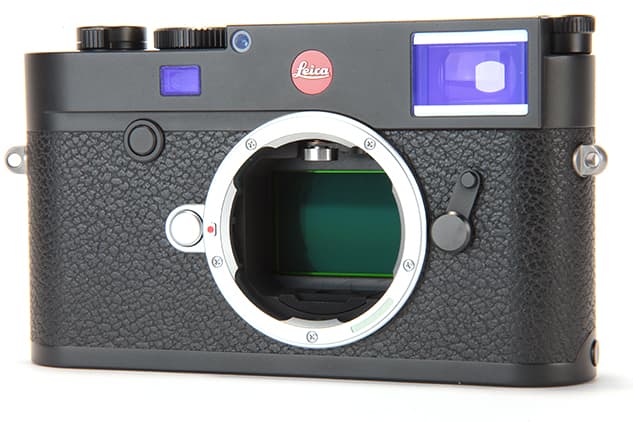
The Leica M10 features an all-metal die cast magnesium body with a synthetic leather covering
By pairing the sensor up with the company’s latest generation Mestro-II image processor, the M10 is able to offer a wider ISO range of 100-50,000 and is capable of shooting a continuous burst 2fps faster than the Leica M (Typ 240) – making it the fastest M-series camera Leica has ever made. Although 5fps continuous shooting might not seem that fast by today’s standards, this speed should be sufficient for those it’s out to target. These include travel, street and documentary photographers, not forgetting photojournalists, all of whom love to work under the radar of those around them.

In true Leica fashion, the distinctive red dot is positioned centrally above the lens mount
Traditionalists are more likely to find themselves raising the optical viewfinder to their eye and manually focus via the rangefinder than compose and focus via the rear screen or attach the optional EVF. Those who haven’t used a rangefinder before will find it takes time and skill to align what the rangefinder displays (shown as a small central rectangular section in the viewfinder) with what your eye sees to create a pin-sharp image. The welcome news is that the viewfinder has been extensively reworked to improve the view of subjects captured within the frame. The field of view has received a 30% enlargement and the widest focal length it covers is 28mm. If you wish to use a lens wider than this focal length you will need to use the screen or EVF to get an accurate view of what falls inside and outside of the frame. Other improvements to the viewfinder include a higher magnification (0.73x) and there’s a 50% increase of the eye-relief to make it more convenient for those who wear glasses.

At the front you get a frame-line selection lever – a mechanism that allows photographers to assess the field of view of lenses with different focal lengths without having to physically mount them
To get around the issue of parallax errors, whereby the view offered by the optical viewfinder is not the same as that captured through the camera’s lens, there’s the option to compose via the M10’s fixed 3in, 1.04 million-pixel screen. Alternatively, you can attach Leica’s Visoflex (Typ 020) electronic viewfinder via the hotshoe. The good news here is that both the screen and EVF now allow you to inspect a detailed magnified view right across the entire frame – something that was missing from the Leica M9 and Leica M (Typ 240), but is crucial for everyday shooting. Though some purists may not wish to use it, having the option to inspect an off-centre magnified view with focus peaking is a boon and helps to overcome some of the limitations of the rangefinder. With regard to the EVF, it’s the same electronic finder that’s used with Leica T-system cameras. It’s a vast improvement on the rebranded Olympus VF-2 that was made available for the Leica M (Typ 240). It hinges through 90 degrees, translates menu information, and adds an integrated GPS module for geotagging.

The optional Leica Visoflex (Typ 020) clip-on electronic viewfinder (£360) tilts through 90 degrees
We’ll touch on the M10’s controls in greater detail shortly, but a glance at the top plate reveals the shutter speed range runs from 8secs-1/4000sec. There is the option to set it to bulb to create longer exposures and a threaded shutter button sanctions the use of old screw-in-style cable releases. Those with observant eyes may notice the red flash icon on the shutter speed dial, which indicates the maximum flash sync speed (1/180sec). Although there isn’t a dedicated exposure compensation dial on the body, there’s the option to assign the rear thumb dial to this task and take +/-3EV control.

The Leica M10 features the same body dimensions as Leica analogue M-series cameras
With a body depth of just 33.75mm (equivalent to four millimetres less than its closest relative, the Leica M (Typ 240), Leica has been forced to equip the camera with a new, smaller battery. It’s claimed to provide enough stamina for approximately 600 shots and is accessed via a removable metal base plate – a nice reminder of the days when film was loaded this way.

The info screen displays most common settings. Note how battery life is displayed as a percentage
In an effort to make the M10 as pure and simplified as a rangefinder camera gets, we thought Wi-fi connectivity may be left out. Although Leica openly admits Wi-fi isn’t to the taste of all purists, the company sees it as an essential feature, particularly for those who share work through popular social channels such as Instagram. The M10 marks the first M-system camera to feature integrated WLAN connectivity and as things stand it’s only compatible with iOS devices. Users wishing to control the M10 remotely or transfer images wirelessly to an iPhone or iPad are required to download the Leica M app that’s available for free from the app store.
Leica M10 review: ISO control
On previous digital Leica M-system cameras, the standard procedure for adjusting ISO has been to use a button at the rear of the camera before selecting the sensitivity you’d like to use with the four-way controller. To provide full manual control of all essential shooting parameters, the next model in the M-system was crying out for an ISO dial, and this has been introduced onto the M10. For the first time on a digital Leica M, it’s possible to take control of focusing, shutter speed, aperture and ISO straight from your fingertips.

You’re required to lift the ISO dial to adjust it. The red ring indicates its unlocked position
The position of the new ISO dial pays homage to the rewind lever you find on older analog M-system models and is found on the top left corner when the camera is viewed from the top looking down. The small size of the dial means you’re limited to controlling the sensitivity between ISO 100-6400, but by raising the dial and rotating it to its ‘M’ setting you’re given control across the full ISO 100-50,000 range from the ISO setup menu. Those who’d prefer to shoot with their camera set to auto ISO are given the option to rotate the ISO dial to its ‘A’ setting and establish a maximum auto sensitivity setting between ISO 250-50,000.
Leica M10 review: Build & Handling
For the price you pay for a camera like the M10 it has to feel special from the moment you lay hands on it and Leica has achieved this by cutting no corners when it comes to build quality. Unlike some manufacturers who look to shed weight to make their models as light as possible, Leica throws caution to the wind in this respect. The result is a camera that’s heavy for its size. With a magnesium chassis and top and bottom plates that are milled from solid brass blocks, you get the sense it’s built to last a lifetime and could even be passed down through future generations.
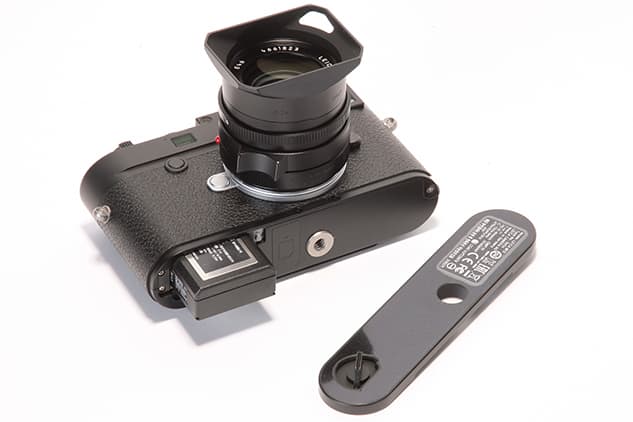
Removing the brass bottom plate gains access to the battery and SD card slot
The robust build quality extends all the way around the body, from the milled metal top plate dials to the classic frame-line selection lever – a mechanism that allows photographers to assess the field of view of lenses with different focal lengths without having to physically mount them. It’s something that was reintroduced to the Leica M-P (Typ240) after the Leica M (Typ240) and is another nice throwback to Leica’s analog M-system models. If I had to make any criticisms about the build quality it would be that the on/off switch feels rather plasticky compared to the other buttons and dials and the optional EVF doesn’t match the same metal finish as the body.
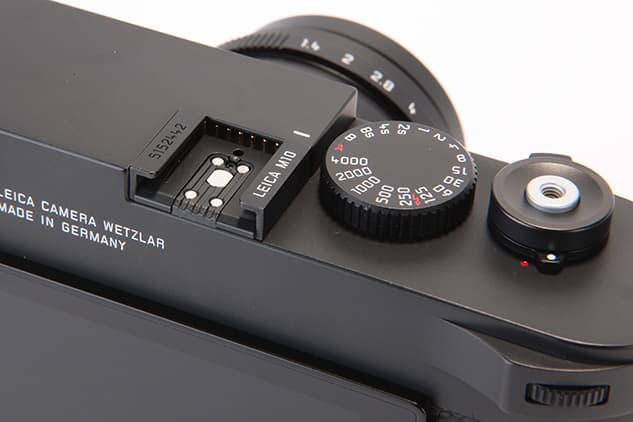
A view of the top plate showing the shutter speed dial, on/off switch and engraved model number
By omitting video functionality and shrinking the electronics into a more confined space, Leica has successfully achieved its goal of creating the slimmest digital M-series of all time. Compared to the Leica M9 and Leica M (Typ 240), both of which had an M on steroids feel about them, this new model fits much better in the hand. Those who’ve been patiently waiting for a digital M-series model to have an identical footprint and the same feel as Leica’s analogue M cameras will be delighted their wish has finally come true.

The button above the silver lens release button is used to pull up a magnified view to aid focusing
Leica’s idea of streamlining the controls means the on/off switch that encircles the shutter button is no longer used to access continuous shooting or self-timer shooting modes. Instead these are accessed from the main menu or via the favourites menu – the latter being a freely configurable area of the menu where it’s possible to list your most-used functions for quick and easy access. The simplified arrangement of three large buttons that align below the viewfinder are used to activate live view, playback and the main menu. With no obvious delete or info button, you’re required to use the menu button in playback mode to load the M10’s delete/rate options and the button in the centre of the four-way direction buttons presents an overview of the cameras key settings out of live view. Things you can expect to see on this info screen include exposure information, battery life (shown as a percentage), as well as the remaining storage capacity on the SD card. At the front of the camera you’ll also find a button between the lens release and focusing window. This falls to hand where your middle finder lays to rest and is used to pull up a magnified view to aid manual focusing.
The decision to add an ISO dial to the corner of the body means you no longer get the unmistakable sweeping curves at either end of the top plate, but what you gain in having the option to manually adjust the sensitivity on the fly outweighs what you lose in terms of style. Not only does it make it a more satisfying camera to use, it allows you to adjust your exposure considerably faster. How to best raise the dial from its locked position isn’t immediately obvious, but I found pinching the dial with your thumb and index finger before pulling it up is most effective. A red ring beneath the dial offers a visual indication that it’s in its unlocked position. Like the shutter speed dial, it also notches positively into place at each setting with a reassuring click.
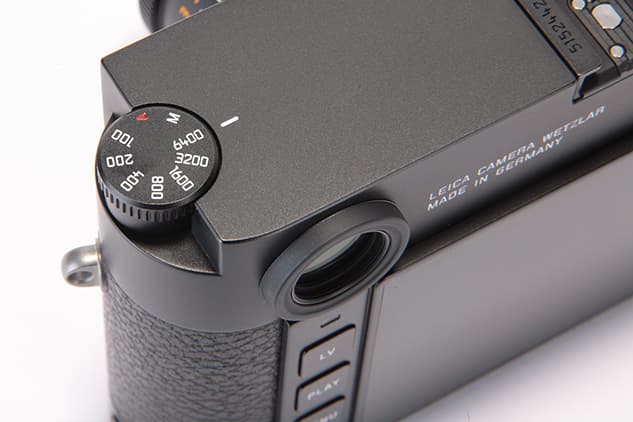
The black paint finish has changed ever so slightly to what Leica now calls a black chrome finish This gives it a more even, gun-like appearance
To provide users with reassurance that the camera can be used in any weather, the M10 features water and dust-resistant seals. The only reason Leica don’t give it official weatherproof status comes down to the lack of a rubberised seal between the lens mount and their M-system lenses. During testing, the body was used on several occasions in rain showers but didn’t show any side affects from getting thoroughly drenched. This will provide M10 users with the confidence they need to get the shot no matter what the demanding conditions or environment they find themselves in.
Overall, the build quality and finish of the Leica M10 is exemplary. It shouts first class German engineering and leaves you with the lasting impression that Leica’s design team spent a great deal of time getting it just right.
Leica M10 review: Performance
Usually, we comment on the autofocus performance in this area of our reviews, but with the focusing on the M10 being an all-manual affair, we’ll start by commenting on its manual focusing aids instead. When you’re not using the rangefinder and wish to focus via the screen or EVF you’re given the option to turn focus peaking on and select from four different colours (red, blue, green, white). This can be used with or without the camera’s focus aid, which magnifies the central area of the frame. Inspecting the focus before you shoot using this magnified view is simple – just twist the manual focus ring on the lens to pull it up on screen, or use the magnify view button from the front of the body. The rear command dial is used to toggle between 5x and 10x magnifications and users can now shift the magnified view anywhere in the frame using the four-way controller. In principle this is a great, but in practice it’s slow to use, taking around six seconds to shift from the centre to the far corners of the frame. The 10x-magnified view helps tremendously with manual focusing, but found there were also times where an even closer magnification would have been useful for inspecting finely detailed subjects.

In terms of operation, it doesn’t feel sluggish like some previous M-series models. The start-up speed isn’t as rapid as some mirrorless cameras, still it responds to button pushes quickly, switches in and out of live view without hesitation and acknowledges all adjustment changes as you make them. Having an eye sensor built-in to the EVF transforms the user experience, though it must be mentioned mounting it via the hot shoe does partially obscure the shutter speed dial.

With more and more of today’s cameras featuring dual-card slots, we thought the M10 might follow in the same direction. Regrettably it doesn’t and therefore won’t satisfy those who like to back up to two cards at the same time. Loaded with a Lexar Professional 633x SDHC card, the M10 recorded 28 frames in the DNG format at 5fps before its buffer kicked and put a halt to proceedings. The M10 managed a maximum of 30 frames at 5fps when it recorded JPEG (24MP) files.

The centre weighted TTL metering system calculates its exposure by bouncing the light that passes through the lens off a mid-grey strip painted on the shutter curtain onto a sensor. In the optical viewfinder you’ll see illuminated left or right arrows that tell you which way to turn the aperture ring, with a constant circle indicating correct exposure. In aperture priority mode, these arrows are replaced by the shutter speed value the camera calculates. Generally speaking, the M10’s TTL exposure metering is reliable, but for those who’d prefer to use spot or evaluative metering these modes are also present. It should also be noted there’s a small histogram to refer to onscreen and shadow and highlight clipping warnings can also be viewed.
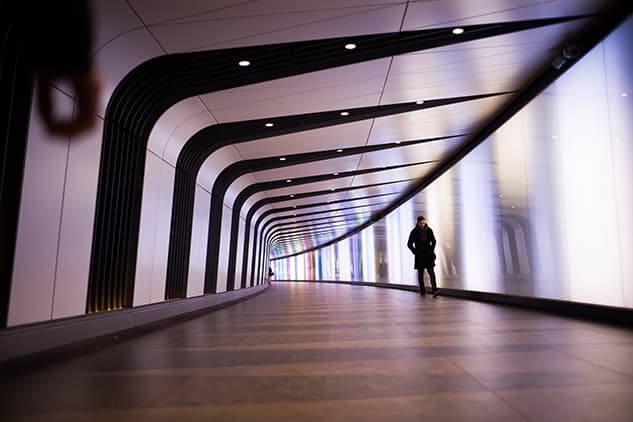
Anyone coming from a Leica M9 or Leica M (Typ240) will notice the menu has been refreshed to look like that of the Leica Q’s. If you’d prefer the screen to appear brighter you’ll need to adjust the display brightness from the default Auto setting to high. To preserve battery life we’d recommend setting the auto power saving to its minimum 2 minute option. On the subject of battery life, the camera gets close to shooting 600 frames using the rangefinder alone, however those who opt to use the screen or optional EVF will find they’ll struggle to shoot half this number. If you’re planning to shoot for long periods and be away from main power, spare batteries are absolutely essential.
Leica M10 review: Dynamic range, resolution and noise
Leica made it clear from the outset that the sensor you find in the M10 isn’t the same as the sensor used in the Leica Q or Leica SL as it has to be specially adapted for Leica M lenses. The 24-million-pixel full frame sensor is most likely manufactured by Sony and claims to deliver improved low light sensitivity and dynamic range, with two stops of overall improvement in performance compared to previous digital Leica M-system cameras.
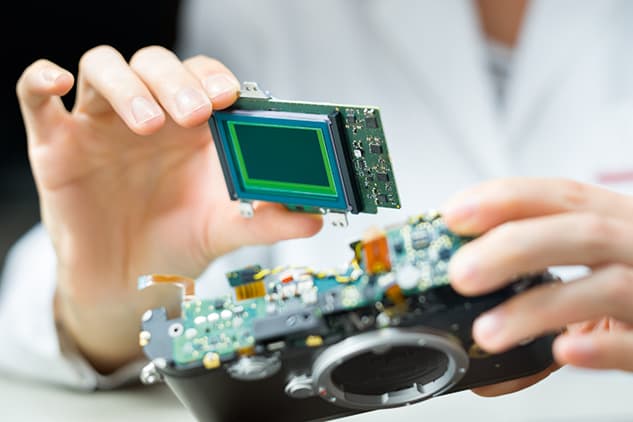
Installation of the sensor in connection with the image board; the two components are calibrated to each other
During our product briefing, we were shown example images of the camera’s low-light capability at high ISO settings and were told users can shoot comfortably up to ISO 6400. Our real-world images and lab tests confirm that the M10 produces fantastic results across ISO 100-6400. The dynamic range doesn’t set any records, but reaches a respectable 12.9EV at ISO 100. The level of detail the sensor resolves is about what you would expect from a camera with a 24-million-pixel resolution.
Dynamic range
When we previously reviewed the Leica M (Type240) we recorded 12.5EV of dynamic range at its lowest sensitivity setting. The Leica M10 improves on this by offering 12.9EV at ISO 100 – not as jaw dropping as some recent sensors that are reaching upward of 13EV, but more than enough to recover a good level of shadow information from the camera’s DNG files. The dynamic range figures steadily fall as the sensitivity increases, dropping to 10EV at ISO 3200 and just below 9EV at ISO 6400. It’s great to see the dynamic range figure holding above 6EV all the way through the ISO range, right up to the M10’s ISO ceiling of ISO 50,000. Our Applied Imaging tests tell us the M10 manages to surpass the Leica Q’s dynamic range, albeit by a slim margin.
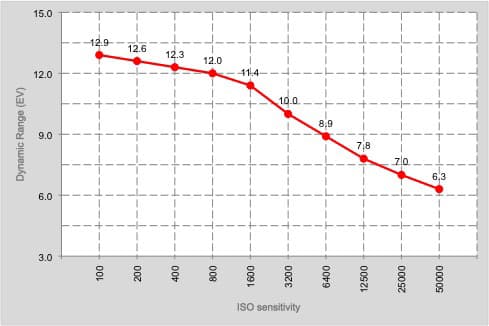
Leica M10 dynamic range
Resolution
To resolve the finest detail from the M10’s sensor it’s imperative users choose to shoot in the raw (DNG) format ahead of JPEG. An inspection of the camera’s uncompressed raw files tells us that the sensor resolves around 3,400l/ph at ISO 100 and manages to preserve this same level of detail right up to ISO 1600. The resolution drops ever so slightly at ISO 3200 to 3,200l/ph and remains impressive at ISO 6400, where we recorded a 3,000l/ph figure. As you push beyond ISO 6400 you start to notice the detail tailing off a little faster, but the way the sensor still manages to resolve 2,800l/ph at ISO 25,000 and 2,600l/ph at ISO 50,000 is very respectable.
Below we show details from our resolution chart test pattern . Multiply the number beneath the lines by 200 to give the resolution in lines per picture height.

Leica M10 Raw ISO 100
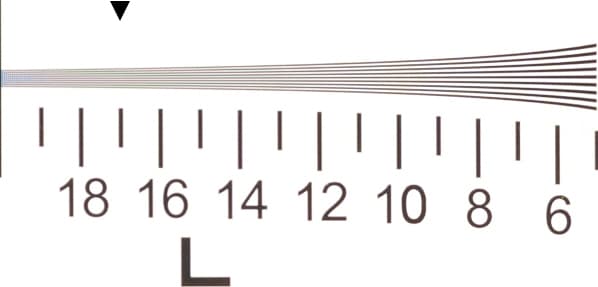
Leica M10 Raw ISO 200
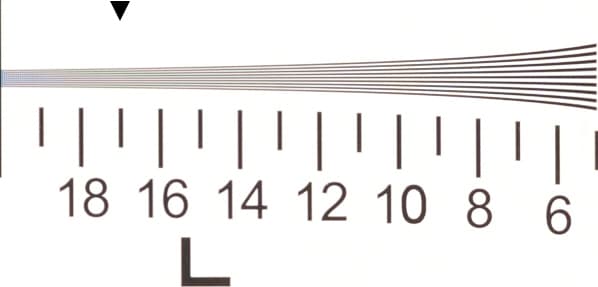
Leica M10 Raw ISO 400
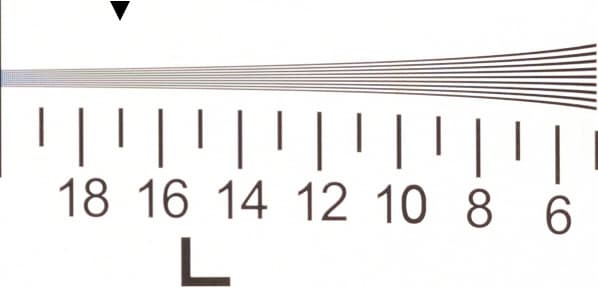
Leica M10 Raw ISO 800
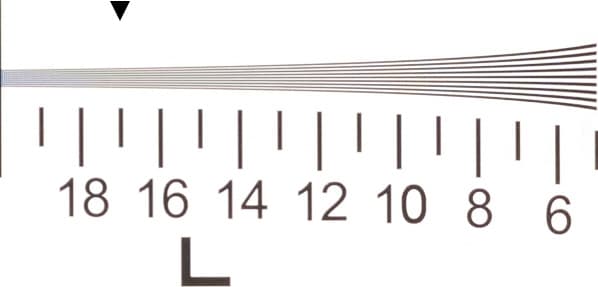
Leica M10 Raw ISO 1600
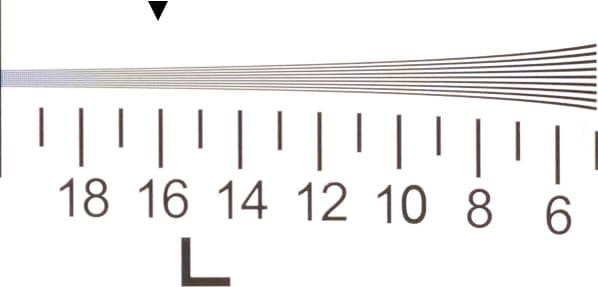
Leica M10 Raw ISO 3200
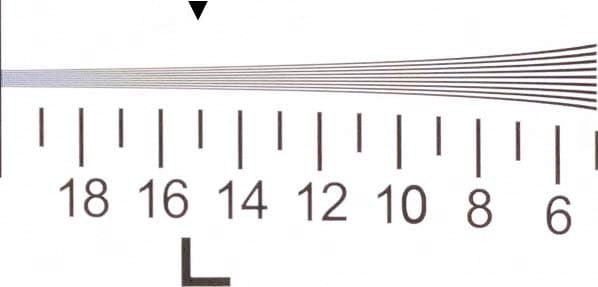
Leica M10 Raw ISO 6400
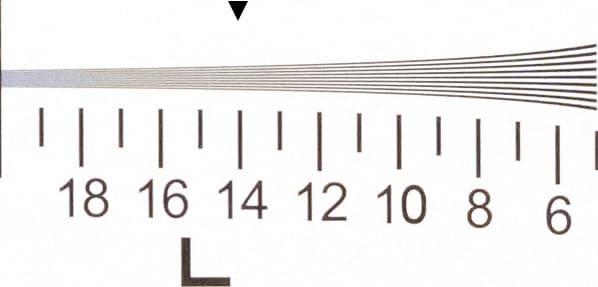
Leica M10 Raw ISO 12500
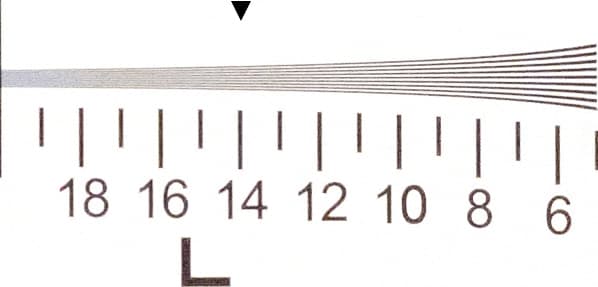
Leica M10 Raw ISO 25000

Leica M10 Raw ISO 50000
Noise
Examining both our diorama test shots and real-world images reveals that the M10’s sensor produces exceptionally clean, noise-free raw files between ISO 100 and ISO 800. At ISO 1,600 you can just about start to make out luminance noise appearing in shadowed areas and it becomes slightly more pronounced as you push past ISO 3200 towards ISO 6400. You can confidently achieve acceptable results at ISO 6400 and push as high as ISO 12,500 if you’re prepared to carry out some cautious application of noise reduction in post processing. Although the level of detail the sensor resolves beyond ISO 12,500 is impressive, the same can’t be said for the level of noise, which gradually deteriorates to the point where a purple tinge is evident in files captured at ISO 50,000. Colour noise is exceptionally well handled throughout the sensitivity range, both in the Leica M10’s JPEGs and raw files.
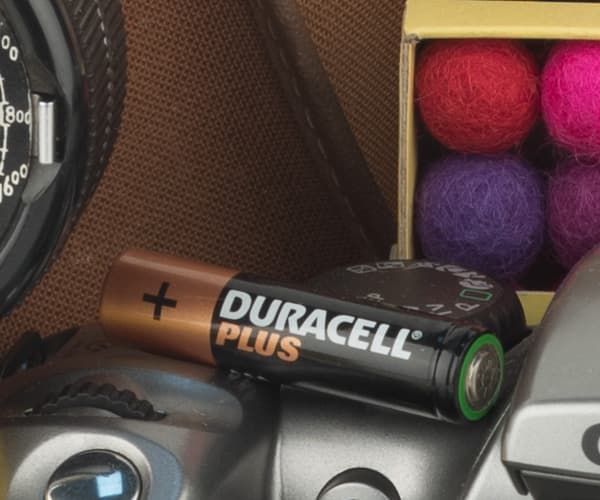
Leica M10 Raw ISO 100
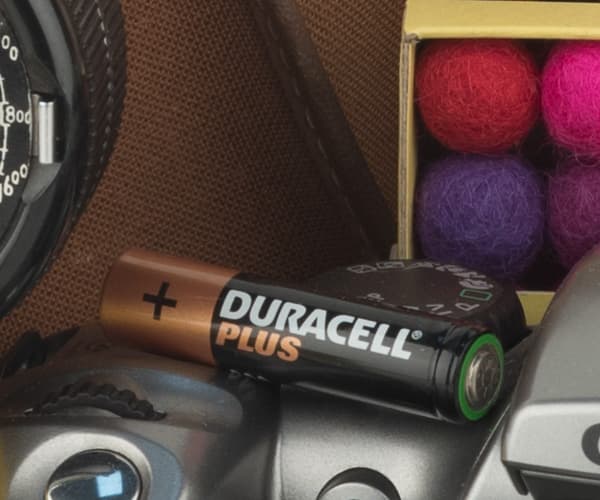
Leica M10 Raw ISO 200
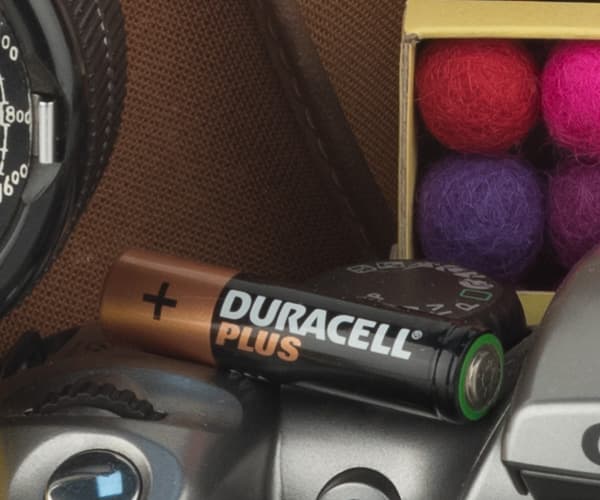
Leica M10 Raw ISO 400
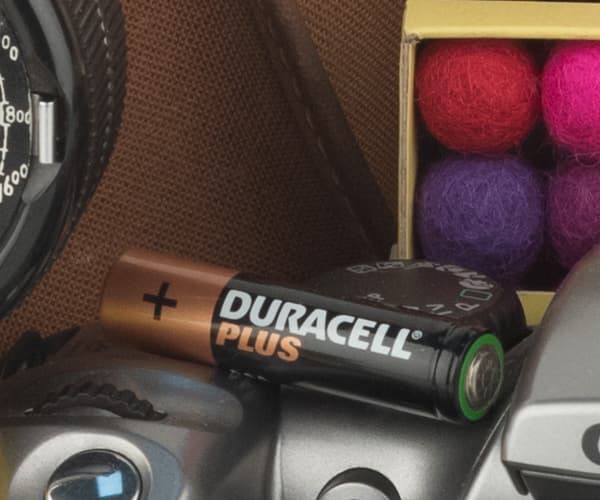
Leica M10 Raw ISO 800
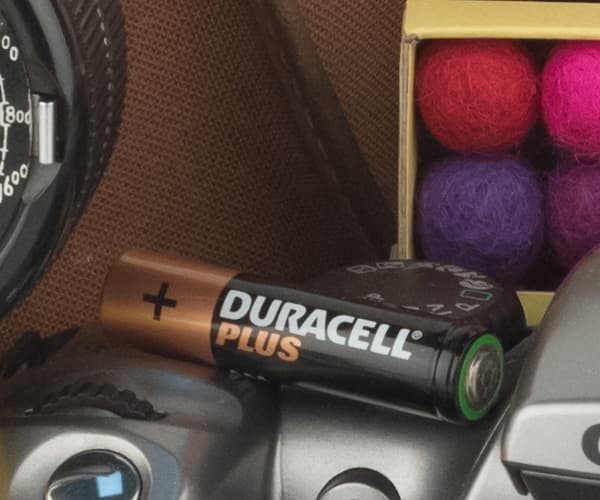
Leica M10 Raw ISO 1600
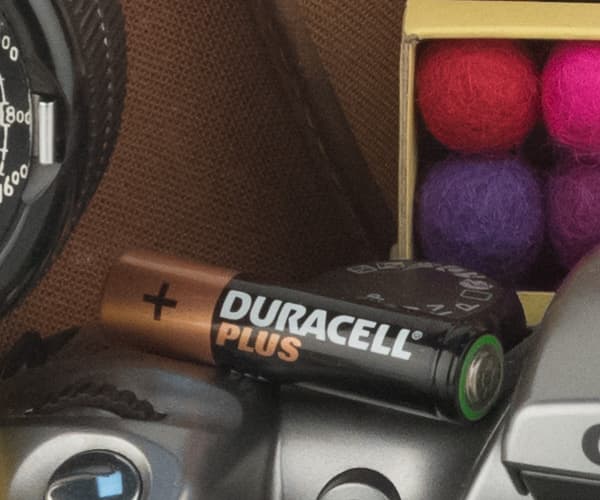
Leica M10 Raw ISO 3200
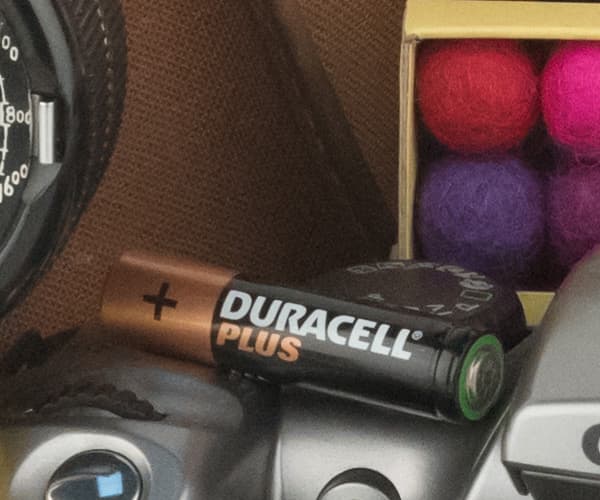
Leica M10 Raw ISO 6400
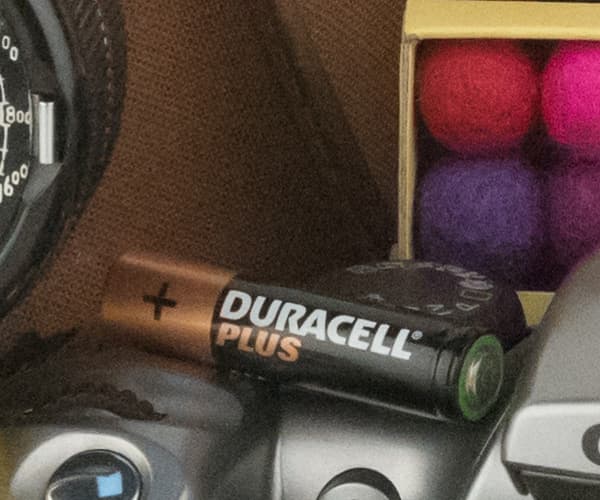
Leica M10 Raw ISO 12500
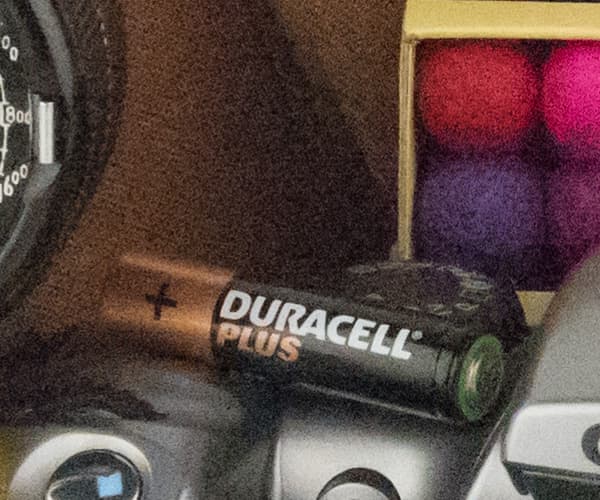
Leica M10 Raw ISO 25000
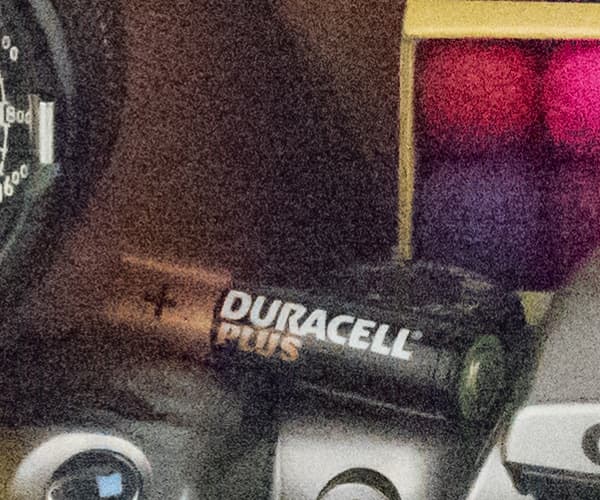
Leica M10 Raw ISO 50000
Leica M10 review: Verdict
When we reviewed the M (Typ240) we made the comment that the manufacturer had slightly missed the point on what Leica users really wanted from the next model in the M-system. We felt the compromises that were made, combined with the technology it added, spoiled the experience of using a rangefinder. To get back to its core value of delivering a pure stills camera, Leica had to rethink the direction of its next model in its M-system. By stripping out what’s not deemed necessary by contemporary photographers, Leica has developed a camera that goes back to its roots and focus on the special bond that should be created between a stills photographer and their camera.

Purists will be very satisfied by the direction Leica has taken with their latest M-series model
Though it won’t satisfy all photographers tastes and requirements, those who are familiar with Leica’s rangefinders will immediately fall in love with the M10. Manually focusing via the rangefinder does take time and finesse, but this immerses you in the moment and makes you analyse a scene or subject carefully before you capture it. The millimeters and grams it sheds from its dimensions make it less bulky and it feels much like a traditional analog M-series camera in the hand. Add its strong dynamic range, impressive detail and excellent noise response at high sensitivities to this and we’re presented with an image quality performance that Leica M-system users have deserved for a long time.
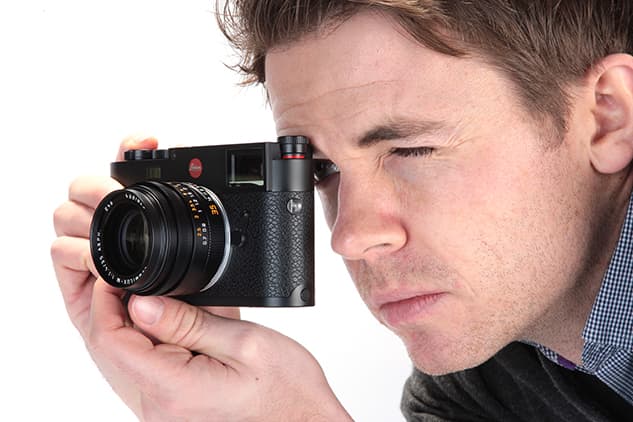
AP’s Michael Topham raises the Leica M10’s viewfinder to his eye during lab and studio testing
As well as the positives, there are a few negatives – the battery life has taken a hit, it still only accommodates one SD card slot and the optional EVF isn’t as robust as the body itself. These minor points aside, it’s an exceptional camera and very enjoyable one to carry over your shoulder and use for the purposes it is made. Unlike many of today’s releases, the Leica M10 is not an example of the direction cameras are heading in the future. What it is, is a celebration of the past – something Leica has executed magnificently.

